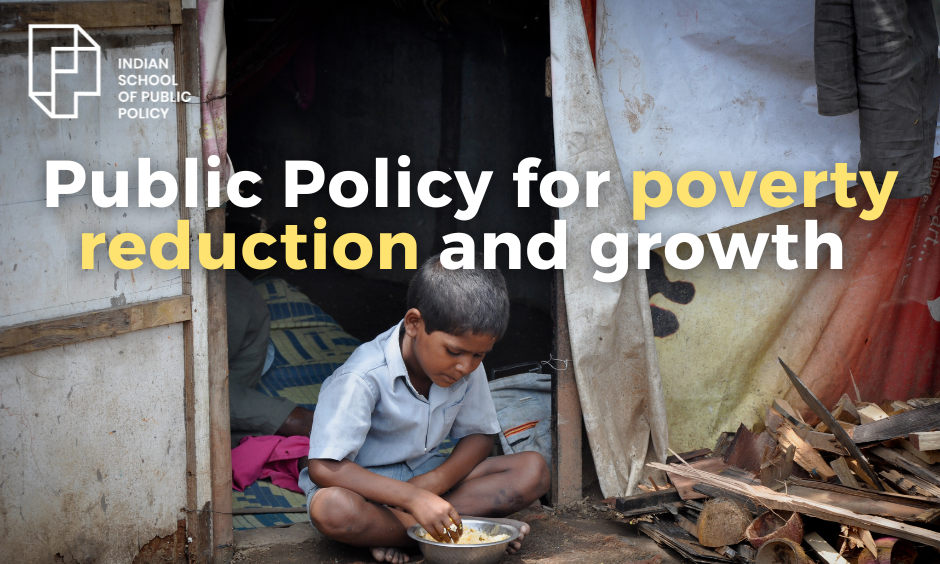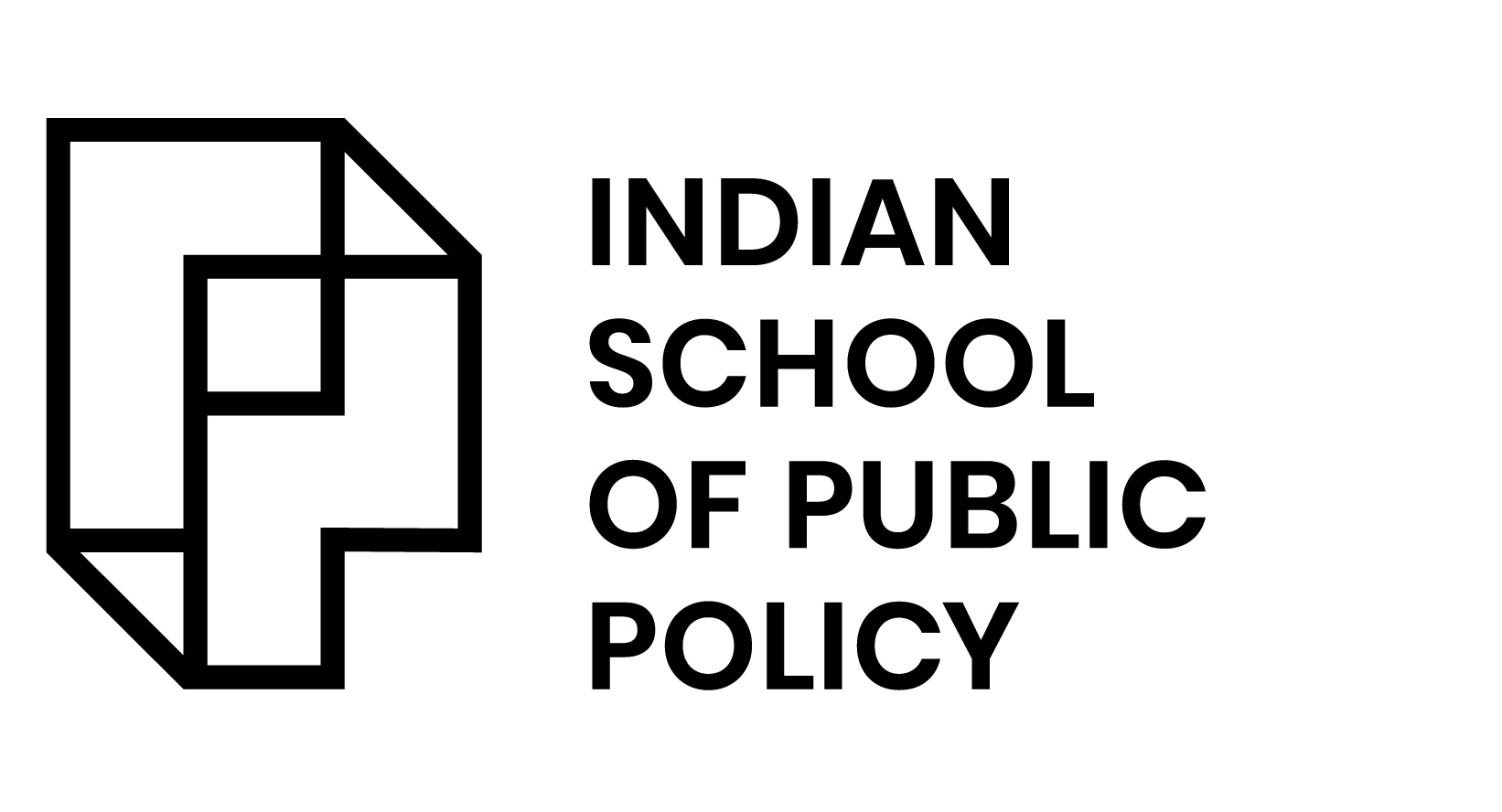
Public Policy for poverty reduction and growth

What is Poverty Alleviation?
Poverty alleviation involves a series of economic and humanitarian actions aimed at eradicating poverty within a country.
| According to the World Bank, “Poverty is a pronounced deprivation in well-being and comprises many dimensions. It includes low incomes and the inability to acquire the basic goods and services necessary for survival with dignity. Poverty also encompasses low levels of health and education, poor access to clean water and sanitation, inadequate physical security, lack of voice, and insufficient capacity and opportunity to better one’s life.” |
According to the most recent official data, 268 million people in India live on less than $1.90 per day.
Types of poverty
Poverty is classified into two main categories –
- Relative Poverty—Defined from a social standpoint, relative poverty measures living standards in comparison to the economic norms of the surrounding community, thus reflecting income inequality.
- Absolute Poverty – This describes a situation where household income falls below the necessary threshold to maintain basic living standards, including food, shelter, and housing.
Causes of poverty in India
- Population Explosion – India’s population has consistently grown over the years, increasing at an annual rate of 2.2% over the past 45 years. This equates to an average of about 17 million people being added to the population each year, significantly boosting the demand for consumer goods.

Source – https://data.worldbank.org/indicator/SP.POP.GROW?end=2022&locations=IN&start=1961&view=chart
- Low Agricultural Productivity – A key reason for poverty is the low productivity in the agricultural sector. Contributing factors include fragmented land holdings, lack of capital, limited knowledge of new farming technologies, reliance on traditional cultivation methods, and storage losses.
Source – https://prsindia.org/policy/analytical-reports/state-agriculture-india#:~:text=It%20is%20the%20highest%20producer,13%25%20to%20the%20wheat%20production
Learn how to help farmers double their income by 2025 with new policy reforms.
- Inefficient Resource Utilisation – The country faces underemployment and disguised unemployment, particularly in agriculture. This leads to low agricultural output and a decline in living standards.
- Low Rate of Economic Development – Economic development in India was particularly sluggish during the first 40 years post-independence, prior to the economic reforms of 1991.
- Price Rise – Continuous price increases have burdened the poor. While some have benefited, lower-income groups have struggled to meet basic needs due to rising costs.
- Unemployment – The rising population has resulted in more job seekers, but job opportunities have not expanded sufficiently to meet this demand, contributing to poverty.

- Lack of Capital and Entrepreneurship – A shortage of capital and entrepreneurial initiatives leads to low levels of investment and job creation in the economy.
- Social Factors – Economic issues are compounded by social factors such as inheritance laws, the caste system, and certain traditions, all of which impede poverty alleviation.
- Colonial Exploitation – British colonisation de-industrialised India, devastating its traditional handicrafts and textile industries and transforming the country into a raw material supplier for European industries.
- Climatic Factors – Many of India’s poor reside in states like Bihar, Uttar Pradesh, Madhya Pradesh, Chhattisgarh, Odisha, and Jharkhand. These regions frequently suffer from natural disasters such as floods, earthquakes, and cyclones, which heavily damage agriculture.
- Poverty Trap –

Poverty eradication programmes by the government
The Government of India launched various initiatives to eradicate poverty, provide basic amenities to poor households, promote the reduction of inequality, and find ways to lessen poverty.
- Integrated Rural Development Programme (IRDP)—Launched in 1978-79 and expanded universally on 2 October 1980, this programme aims to assist the rural poor with subsidies and bank credit to create productive employment opportunities throughout successive plan periods.
- Jawahar Rozgar Yojana/Jawahar Gram Samridhi Yojana – Designed to generate meaningful employment for the unemployed and underemployed in rural areas, this scheme focuses on creating economic infrastructure and community and social assets.
- Rural Housing – Indira Awaas Yojana (IAY) – This programme provides free housing to Below Poverty Line (BPL) families in rural areas, with a primary focus on SC/ST households.
- Food for Work Programme – This initiative aims to enhance food security through wage employment. It supplies food grains to states free of cost, though the distribution from Food Corporation of India (FCI) godowns has been slow.
- National Old Age Pension Scheme (NOAPS) – Administered by the central government and implemented by panchayats and municipalities, this scheme provides ₹200 per month to applicants aged 60–79 and ₹500 per month to those over 80, as per the 2011–2012 Budget.
- Annapurna Scheme – Introduced in 1999–2000, this scheme provides 10 kg of free food grains per month to senior citizens who are not covered under NOAPS and have no one to support them in their village.
- Sampoorna Gramin Rozgar Yojana (SGRY) – The scheme aims to generate wage employment, create durable economic infrastructure in rural areas, and provide food and nutritional security for the poor.
- Mahatma Gandhi National Rural Employment Guarantee Act (MGNREGA) 2005 – This act guarantees 100 days of employment per year to every rural household, with one-third of the jobs reserved for women. The central and state governments establish respective Employment Guarantee Funds for implementation. An unemployment allowance is given if employment is not provided within 15 days of application.
- National Rural Livelihood Mission: Aajeevika (2011) – Aimed at diversifying the needs of the rural poor, this mission provides jobs with regular monthly incomes and promotes the formation of Self Help Groups at the village level.
- National Urban Livelihood Mission (NULM) – This mission focuses on organising the urban poor into Self Help Groups, creating skill development opportunities for market-based employment, and facilitating self-employment ventures with easy credit access.
- Pradhan Mantri Kaushal Vikas Yojana (PMKVY) – Targets fresh entrants to the labour market, especially those who have dropped out after class X or XII.
- Pradhan Mantri Jan Dhan Yojana – Aimed at enabling direct benefit transfers of subsidies, pensions, and insurance, this scheme achieved the target of opening 1.5 crore bank accounts, focusing on the unbanked poor.
What are the reasons for the ineffectiveness of poverty alleviation programmes?
- Integrated Rural Development Programme (IRDP)—Launched in 1978-79 and expanded universally on 2 October 1980, this programme aims to assist the rural poor with subsidies and bank credit to create productive employment opportunities throughout successive plan periods.
- Jawahar Rozgar Yojana/Jawahar Gram Samridhi Yojana – Designed to generate meaningful employment for the unemployed and underemployed in rural areas, this scheme focuses on creating economic infrastructure and community and social assets.
- Rural Housing – Indira Awaas Yojana – This programme provides free housing to Below Poverty Line (BPL) families in rural areas, with a primary focus on SC/ST households.
- Food for Work Programme – This initiative aims to enhance food security through wage employment. It supplies food grains to states free of cost, though the distribution from Food Corporation of India (FCI) godowns has been slow.
- National Old Age Pension Scheme (NOAPS) – Administered by the central government and implemented by panchayats and municipalities, this scheme provides ₹200 per month to applicants aged 60–79, and ₹500 per month to those over 80, as per the 2011–2012 Budget.
- Annapurna Scheme – Introduced in 1999–2000, this scheme provides 10 kg of free food grains per month to senior citizens who are not covered under NOAPS and have no one to support them in their village.
- Sampoorna Gramin Rozgar Yojana (SGRY) – The scheme aims to generate wage employment, create durable economic infrastructure in rural areas, and provide food and nutritional security for the poor.
- Mahatma Gandhi National Rural Employment Guarantee Act (MGNREGA) 2005 – This act guarantees 100 days of employment per year to every rural household, with one-third of the jobs reserved for women. The central and state governments establish respective Employment Guarantee Funds for implementation. An unemployment allowance is given if employment is not provided within 15 days of application.
- National Rural Livelihood Mission – Aajeevika (2011) – Aimed at diversifying the needs of the rural poor, this mission provides jobs with regular monthly incomes and promotes the formation of Self Help Groups at the village level.
- National Urban Livelihood Mission (NULM) – This mission focuses on organising the urban poor into Self Help Groups, creating skill development opportunities for market-based employment, and facilitating self-employment ventures with easy credit access.
- Pradhan Mantri Kaushal Vikas Yojana – Targets fresh entrants to the labour market, especially those who have dropped out after class X or XII.
- Pradhan Mantri Jan Dhan Yojana – Aimed at enabling direct benefit transfers of subsidies, pensions, and insurance, this scheme achieved the target of opening 1.5 crore bank accounts, focusing on the unbanked poor.
Effective ways to reduce poverty
- Changing Strategy of Economic Growth – In the 1950s and 1960s, economic growth models like Harrod-Domar and Mahalanobis emphasised rapid industrial growth and increased capital formation to reduce poverty through trickle-down effects. However, this approach failed to generate sufficient employment due to capital-intensive technologies, as seen in India during the 1980s and 1990s. A shift towards labour-intensive growth is recommended. Having said that, education plays a pivotal role in driving economic and social advancements and improving income distribution.
- Agricultural Growth and Poverty Alleviation – Agricultural growth significantly reduces poverty, as evidenced by Punjab and Haryana’s green revolution. However, increased mechanisation has weakened this relationship. Enhanced public investment in agriculture, particularly in irrigation, and access to credit for small farmers is crucial.
- Speedy Development of Infrastructure – Developing infrastructure such as roads, power, and irrigation creates employment and boosts productivity. Public investment in infrastructure, especially in underdeveloped areas, is essential.
- Accelerating Human Resource Development – Investment in education, vocational training, and healthcare improves skills, productivity, and employment opportunities, reducing poverty. Public investment is necessary as the private sector may not adequately invest in human resources.
- Growth of Non-Farm Employment – Promoting non-farm employment in rural areas through marketing, handicrafts, and other activities reduces poverty, as seen in Haryana and Andhra Pradesh.
- Access to Assets and Credit – Effective land reforms and access to credit enable small farmers and rural poor to adopt productivity-enhancing technologies, raising incomes and reducing poverty. However, significant progress in land reforms is needed.
- Public Distribution System (PDS)—Ensuring subsidised food for poor households through PDS helps raise rural incomes and ensures food security. Targeting subsidies to the poor can reduce expenditures and improve effectiveness.
- Direct Attack on Poverty—Special Employment Schemes: Special schemes like MGNREGS and SGSY provide immediate employment and promote self-employment among the rural poor. Effective implementation and the creation of productive assets are vital.
- Economic Growth – Economic growth can reduce poverty if it is inclusive and pro-poor, involving investment in human development and equitable asset distribution. Inflation control is also important to maintain the purchasing power of the poor.
Highly skilled policymakers play a crucial role in enhancing poverty reduction measures by designing effective public policies that promote inclusive growth and development. Their expertise enables them to create targeted strategies, ensuring efficient resource allocation and addressing the needs of the most vulnerable. This fosters economic stability, improved living standards, and sustainable development, driving national progress.
If you also want to shoulder the responsibility and gain the necessary skills to reduce inequality and poverty, formal education and training from a leading institute is the way to go.
Navigating Career Paths in Public Policy
Creating effective policies requires comprehensive analysis and evidence-based decision-making. Competent policymakers are crucial in formulating and executing policies for societal betterment.
Knowing the educational routes is vital for individuals aspiring to enter the field of Public Policy. There is a ripe opportunity to build a career in this domain in India.
A Public Policy aspirant has two prominent choices –
Master’s in Public Policy (MPP) VS Post Graduate Programme (PGP) in Public Policy
India offers numerous Public Policy colleges, each providing two main types of programmes. Which one is right for you?
| Master’s in Public Policy (MPP) | Post Graduate Programme (PGP) in Public Policy |
| The Master’s in Public Policy (MPP) programme explores government policies and their societal impacts, providing a strong foundation for implementing public policies, carrying out analysis, and evaluation. Graduates typically pursue careers in government, nonprofits, or international organisations. | The Post Graduate Programme (PGP) in Public Policy in India aims to improve students’ policy-making skills and effective public policy implementation, preparing them for diverse roles in the field. The curriculum covers subjects like economics, political science, and law, emphasising analytical skills and research methodologies. Graduates are equipped to evaluate policy issues and create evidence-based solutions. When selecting a programme, consider admission criteria and career opportunities. |
The Indian School of Public Policy (ISPP)
The Indian School of Public Policy (ISPP) aims to develop a new cadre of policy leaders for India and its neighbouring regions. Its premier programme in Public Policy, Design & Management (PDM) targets individuals eager to make a notable impact in the Public Policy sector.
The flagship PDM curriculum provides a thorough understanding of Public Policy, integrating design and management principles to create adept systems thinkers and policy executives.
Learn more about the PDM curriculum.
Register your Interest to Study at ISPP
Interested? Apply now!!
FAQS
How to eradicate poverty in India?
Implement inclusive economic policies, improve education and healthcare, promote job creation, support rural development, and ensure social protection schemes.
Can poverty be eradicated?
Poverty can be significantly reduced with sustained effort, inclusive policies, and global cooperation, but complete eradication is challenging due to complex socioeconomic factors.
What are the 10 steps to solving poverty?
Improve education, provide healthcare, ensure social protection, create jobs, promote gender equality, support rural development, enhance infrastructure, foster economic growth, ensure fair wages, and reduce corruption.
What is the definition of poverty?
Poverty is the state of lacking sufficient resources to meet basic living needs, such as food, shelter, clothing, and access to essential services.
What is the difference between poverty alleviation and eradication?
Poverty alleviation reduces the severity of poverty through support and aid, while poverty eradication aims to completely eliminate poverty.
What are the types of poverty?
Absolute poverty, relative poverty, situational poverty, generational poverty, rural poverty, and urban poverty.
Why is eliminating poverty important?
Eliminating poverty improves overall societal well-being, promotes economic stability, enhances health outcomes, and ensures social justice.
What are five practical ways of reducing poverty?
Enhance education, provide healthcare, create jobs, ensure social safety nets, and promote fair economic policies.


